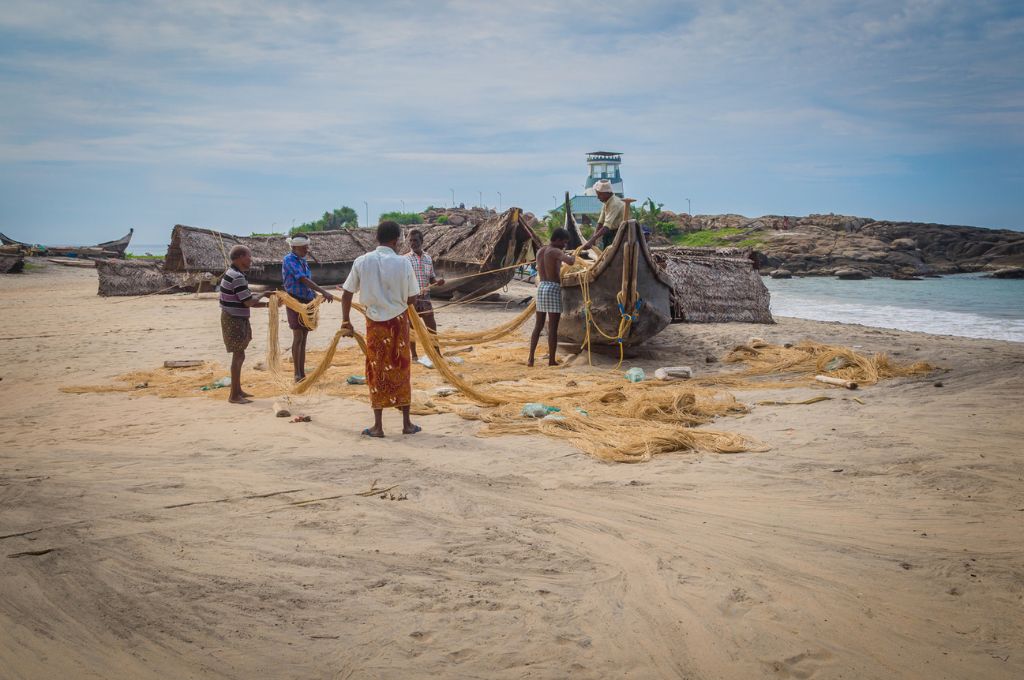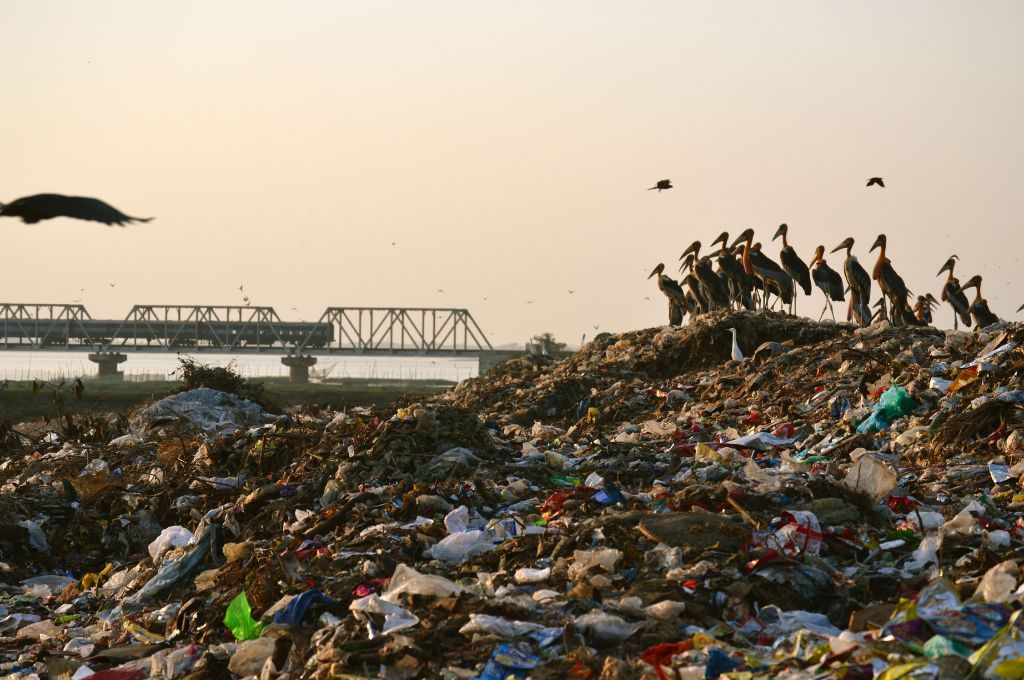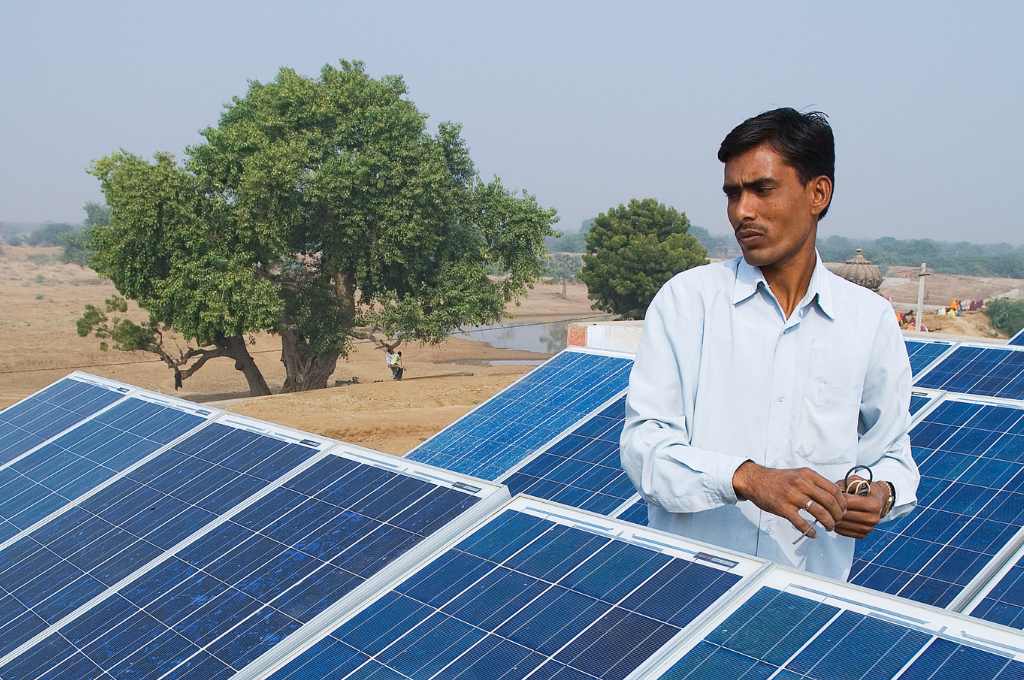The world’s largest anti-poverty programme may also help India achieve its target of creating an additional carbon sink of 2.5-3 billion tonnes of carbon dioxide-equivalent, through additional forest and tree cover, by 2030, in line with the Paris Agreement on climate change.
The Mahatma Gandhi National Rural Employment Guarantee Scheme (MGNREGS) captured 102 million tonnes carbon dioxide (MtCO2) in 2017-18 through plantations and soil quality improvement, found a recent study by researchers at the Indian Institute of Science (IISc), Bengaluru. The scheme’s capacity to sequester carbon dioxide may rise to 249 MtCO2 by 2030.
The researchers calculated carbon sequestration by assessing biomass in plantations and carbon stored in the soil of work sites in 158 villages spanning 18 agro-ecological zones of India to arrive at the conclusion. Eighteen agroecological zones, excluding Western Himalayas, Ladakh Plateau and north Kashmir, Andaman and Nicobar and Lakshadweep islands, were selected.
MGNREGS has been offering unskilled manual work to rural households in India since 2006 and turning out to be a major source of relief in times of distress like droughts. It gained more importance last year when millions of workers were forced to leave cities for their native villages after the Indian government imposed a complete lockdown in wake of the COVID-19 pandemic.
The IISC researchers found that drought-proofing activities, including tree plantations, forest restoration and grassland development, captured the maximum carbon making up for a little over 40 percent of the total carbon sequestration under MGNREGS.
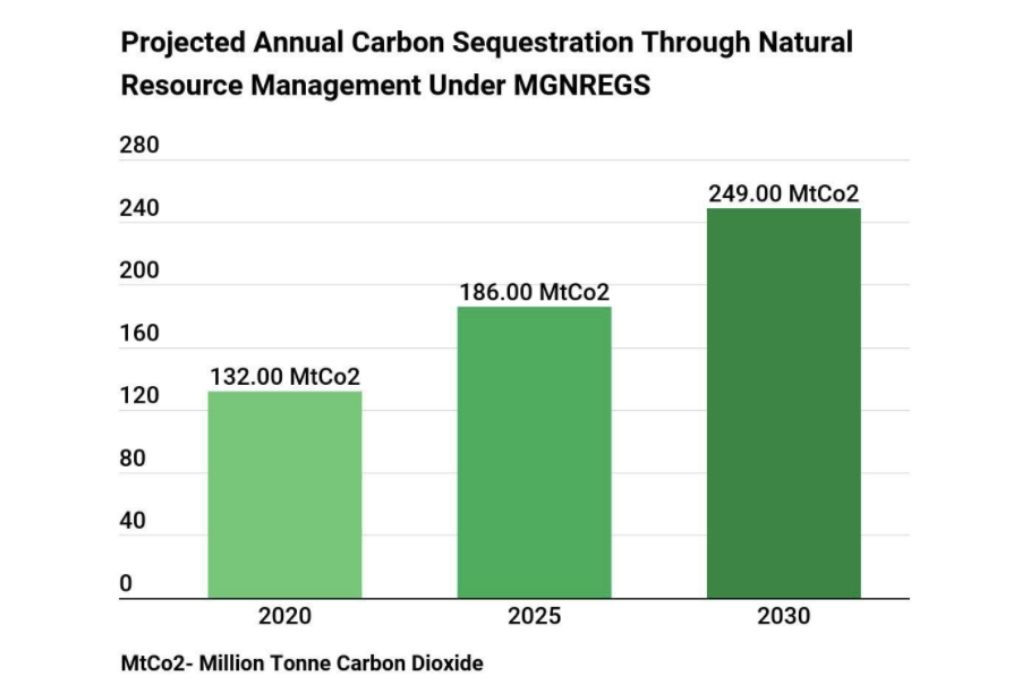
The carbon captured from drought-proofing ranged from 0.29 to 4.50 tonne per hectare per year (tC/ha/yr) depending on the region. Land development activities, including earthen bunding, stone bunding and land levelling, captured 0.1 to 1.97 tC/ha/yr while minor irrigation sequestered 0.08 to 1.93 tC/ha/yr.
“Even though MGNREGS is a livelihood security programme, its environmental benefits were always evident because most activities are related to natural resources like water, land and trees. This is the first time, however, that we could quantify the positive impact at a national level covering most agroecological zones,” said Indu K Murthy, principal research scientist at the Center for Study of Science, Technology and Policy (CSTEP), who co-authored the study. They also added that negative carbon sequestration rates for soil organic carbon were recorded for some activities in some of the agroecological zones as carbon was released from the soils due to crop production practices, soil slope and other factors.
India has placed emphasis on MGNREGS as a contributor to carbon sequestration in its Third Biennial Update Report submitted to the United Nations Framework Convention on Climate Change earlier this year.
Scientists are increasingly calling for ‘climate-resilient development’ i.e. investing in actions that simultaneously meet adaptation, mitigation and sustainable development goals.
“The study usefully highlights the mitigation co-benefits of MGNREGS. This is especially salient in the current climate imperative where scientists are increasingly calling for ‘climate-resilient development’ i.e. investing in actions that simultaneously meet adaptation, mitigation and sustainable development goals. MGNREGA can be one such action for India,” said Chandni Singh, research consultant at the Bengaluru-based Indian Institute for Human Settlements, and contributing author of the IPCC’s Special Report on 1.5 degrees. “If we can identify more such schemes that can achieve multiple goals simultaneously, then we can make progress on different development and climate change goals proactively.”
India is proceeding well on two of the three key pledges it made at the Paris Agreement, including 40 percent share of non-fossil fuel in electric power installed capacity by 2030 and a reduction in the emissions intensity of India’s gross domestic product (GDP), by 33 – 35 percent from the 2005 levels. But it has been lagging on the third pledge to create an additional carbon sink of 2.5 to 3.0 billion tonnes of CO2-equivalent through additional forest and tree cover by 2030.
In the last two years, India’s forests carbon sink has grown by just about 0.6 percent. To meet the target, the sink has to grow by at least 15-20 percent over the next ten-year period. Drought-proofing activities, which include planting of trees, under MGNREGS would qualify for the carbon sink target and is projected to create a cumulative sink of 561 MtCO2 by 2030. This will be around 18 percent of the total target.
“Forest sector alone may not be able to meet the target. There is, therefore, a need to incorporate tree planting, especially fruit and fodder yielding trees, into most natural resource management activities under MGNREGS,” said Murthy. “This will generate alternate income and livelihood sources for people while carbon sequestration will be a co-benefit. Periodic monitoring and reporting of the carbon sequestration benefits will be required, which is also a requirement for adaptation communication under Article 7 of the Paris Agreement.”
The projected carbon sequestration from MGNREGS in the study is based on an assumption that the number of activities under the scheme will keep increasing linearly and this may not give the complete picture. “Linear projections are a bit unclear. Where will the land for these new activities come from, especially in a country like ours where fragmented farmer landholdings is a key and growing issue? Also, the projections ignore other factors such as urbanisation, changing population, and resources needed not only to plant but maintain trees,” said Singh. “In further work, it would be nice to go beyond mitigation benefits and examine how MGNREGS also performs on different sustainable development goals and the extent to which it reduces drought risk for people. Then, we will have a complete picture of the multiple benefits of the scheme.”
Role in building resilience to climate crisis
The carbon-capturing benefit is just one aspect of MGNREGS. The social security and natural assets created through the scheme have been building the resilience of the most vulnerable people to the climate crisis for many years now.
A 2013 study done by IISC found that wage work done under MGNREGS led to considerable environmental benefits and vulnerability reduction in 40 villages of four states through improvement in water and land resources, enhancement in soil carbon and reduction in surface run-off and soil erosion.
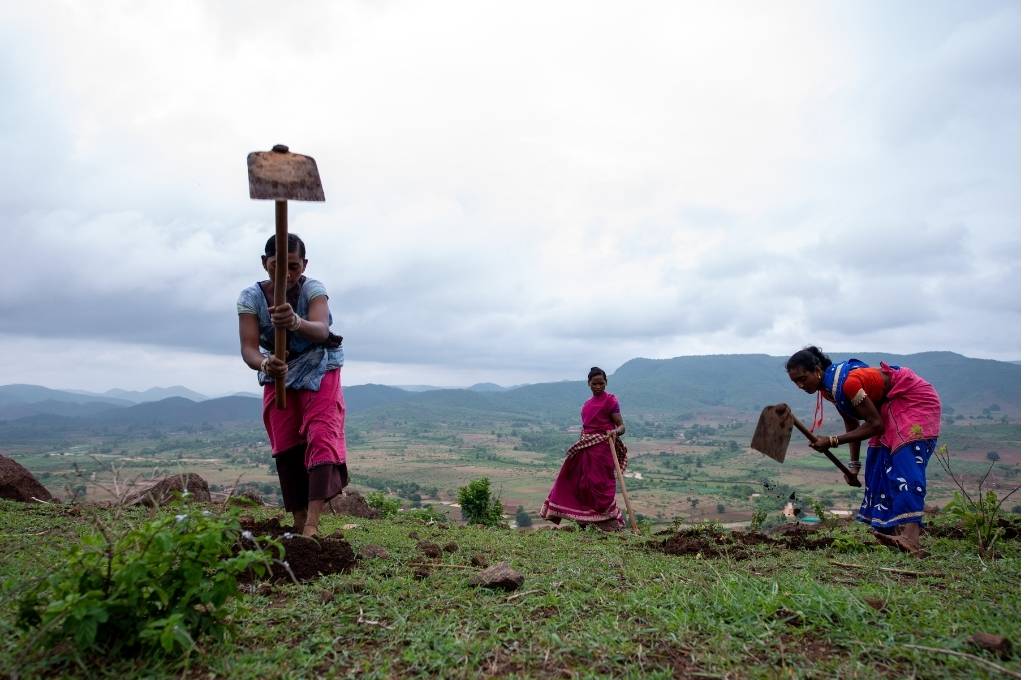
Bharatbhai Gughal, a farm labourer at Dhank village of Rajkot district in Gujarat, remembers the time when the village had just two ponds. “There was only one cropping season and farmers would grow wheat, cotton or groundnut. During drought years even that was not possible. My father used to migrate to Rajkot to do manual work at a construction site every year,” he said.
Dhank lies in Saurashtra peninsula of Gujarat known for extreme temperatures, erratic rainfall and high evaporation rate. It has a semi-arid climate and gets an average annual rainfall of 709 mm. The Deccan trap basalt rock underlies the ground which is a poor keeper of water. At deeper levels, fractures and joints in the stone store groundwater in many places.
After a prolonged drought around 20 years ago, eight more ponds were excavated at Dhank. Their maintenance is now done under the rural job scheme. “All 10 ponds hold good water that helps recharge groundwater which villagers access through wells and borewells for farming. We now grow multiple crops of wheat, pearl millet, cotton, soybean, groundnut, onion and chillis over three seasons,” Gughal said. “There is no need to migrate because plenty of work is available in the village throughout the year. It would not have been possible had there been no ponds to replenish the groundwater.”
The scheme also helps the vulnerable regions brave extreme weather events. Rushikudda village of Srikakulam district in Andhra Pradesh faces regular cyclones. MGNREGS labour was used to deepen and widen a local river and drainage channel to push out the water from cyclones and storms back to the ocean. This led to downstream benefits for households in Isakalapalem village where buildings were less damaged during Cyclone Hudhud in 2014 as water flowed back into the ocean through the channel, rather than into nearby households, found a study by the International Institute for Environment and Development (IIED).
Around 65 percent of surveyed households of the village also reported increased income through guaranteed wages and greater availability of farm work due to the creation of irrigation and agricultural assets, which helped them cope during cyclones.
Cushion against COVID-19 shocks
MGNREGS has a mixed track record in providing adequate employment, quality of asset creation and adequacy of wages offered. It has, however, become the most viable option to keep the large rural workforce engaged in face of ongoing economic distress due to COVID-19 restrictions.
The scheme saw a 50 percent jump in the number of households employed in June 2020 as compared to June 2019 and 35 lakh (350,000) new job cards were made during the three months of April-June 2020. There were still, however, 2.1 crore (21 million) people who demanded work but didn’t get any and only 9.5 percent of families got the stipulated 100 days of work despite the increased allocation of Rs. 40,000 crore (Rs. 400 billion) by the Union government.
Social security schemes like MGNREGS, which reach the most vulnerable must remain robust and effective.
Lakshman Meena was working at a construction site in Barmer city of Rajasthan when Prime Minister Narendra Modi announced the nationwide lockdown in the wake of COVID-19 from March 25, 2020. Meena walked 250 km of the total 350 km distance from Barmer to his home at Kaya village near Udaipur. “The construction site had shut down. The contractor gave Rs. 1,000 and asked us to leave. It was a terrible time as we walked the long distance without enough food, water or shelter,” remembered Meena. “At home, I could not get any work under MGNREGA because I didn’t have a job card. My mother was the only one from our household to get some plantation work for 14 days. We survived for three months by taking loans from relatives and then I got construction work in Udaipur city. I am hopeful of getting the scheme’s job card this year.”
Considering that the climate crisis is likely to aggravate poverty and food security, social security schemes like MGNREGS, which reach the most vulnerable must remain robust and effective. The Indian government, however, has reduced allocation for the scheme this year to Rs. 73,000 crore (730 billion), which is 34.52 percent below the revised estimate of Rs. 1,11,500 crore (Rs. 1.11 trillion) for 2020-21.
“The work offered under rural job scheme was a big relief last year and the whole administration was on its toes to ensure proper implementation,” said Madhulika, a social activist from Dungarpur, Rajasthan. “This year, however, the activities are yet to start at many places even though people continue to face economic distress.”
This article was originally published on Mongabay-India.



